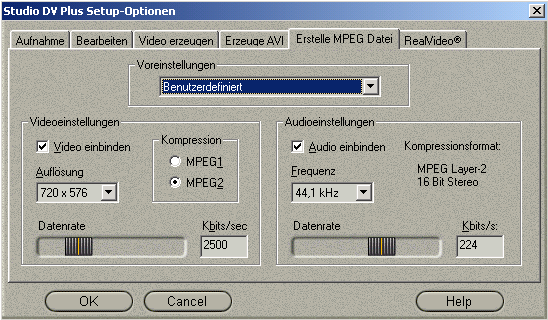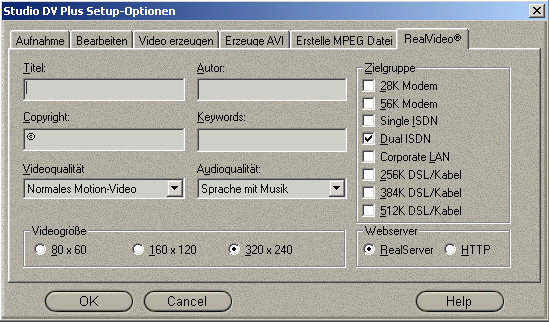Video Editing for $250: Pinnacle Studio DV Plus
Output Of The Finished Film: DV Or MPEG
Once all scenes, titles and cross-fade effects have been perfectly arranged in the timeline, you can start with the output of the whole film. Storage on a DV tape is easiest, provided that the connected DV camera is equipped with a free DV input socket. During the test, storing the DV in conjunction with the Sony DCR-PC110E went entirely without any hitches. In this case, the camera is controlled by the PC system via the fire-wire cable.
Note : At time of testing there were no english drivers and software available!
Output on a DV camera: storing the film on tape is handled conveniently conducted from the PC.
Depending on the intended use, the finished film can be saved as an MPEG-1 or MPEG-2 file.
Video sequences for the Internet: films can also be saved in the space-saving real format (MPEG). In this case, the graphic quality is not optimal.
Converting the whole film into MPEG-1 or MPEG-2 format requires a certain processing time, depending on the output of the hardware and the length of the film sequence. To convert our 25 minute test video, the Athlon 1000 system needed only 20 minutes for the entire process. The file size is, depending on the data rate, 600 MB, which corresponds to an average transfer rate of 400 kB/s. For your information: the resolution of the test video in the MPEG-2 format was around 720 x 576 dpi. However, considerably smaller files can be created by using real format for output. This standard is ideally suited for placing short video sequences on your own homepage or to enable video streaming via a suitable server.
Get Tom's Hardware's best news and in-depth reviews, straight to your inbox.
Current page: Output Of The Finished Film: DV Or MPEG
Prev Page Title Generator And Cross-Fade Effects Next Page And What About MPEG-4?

